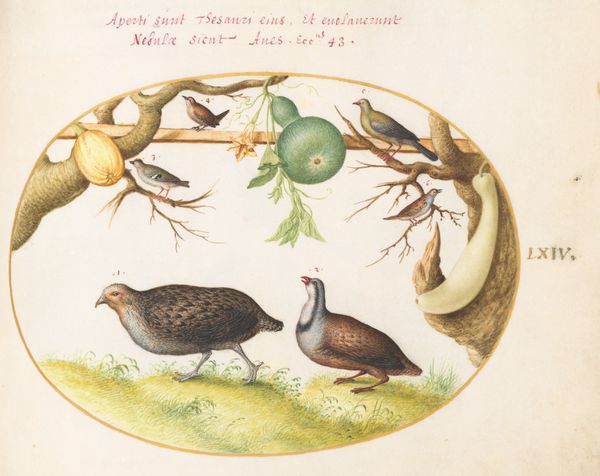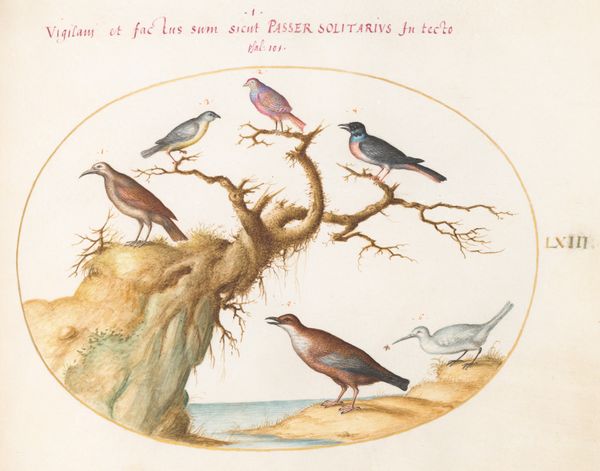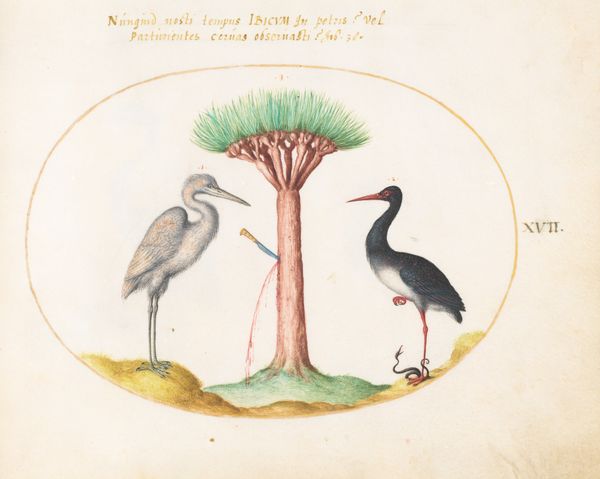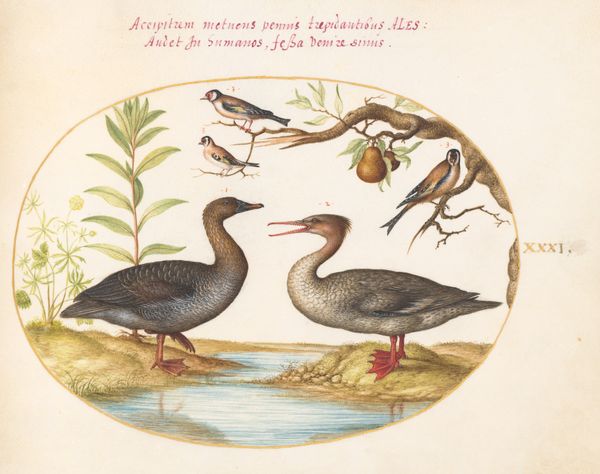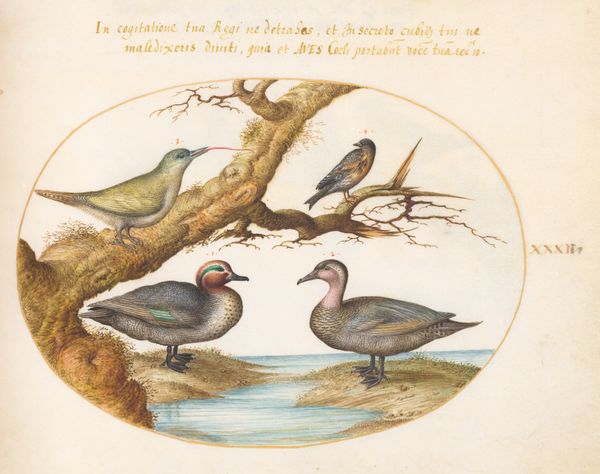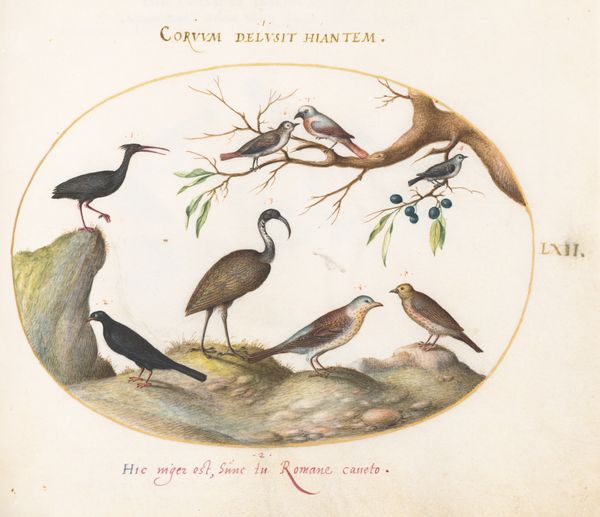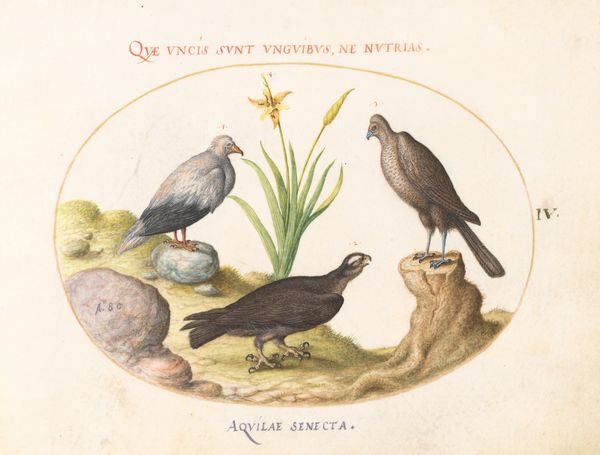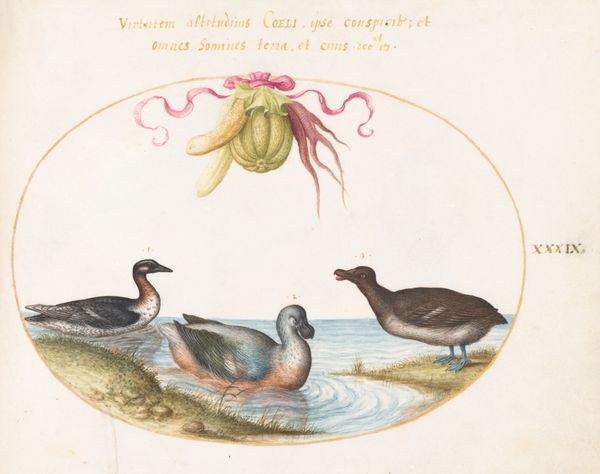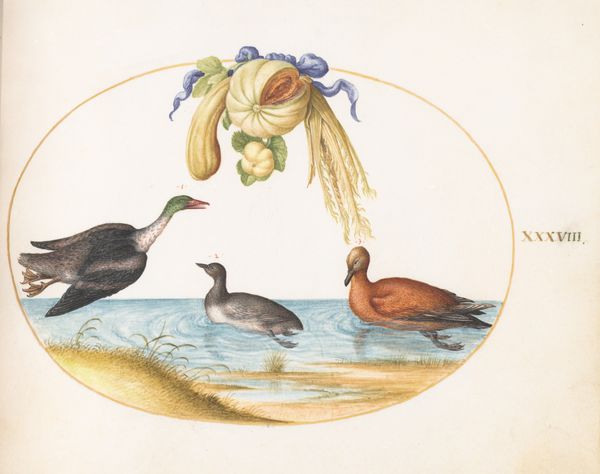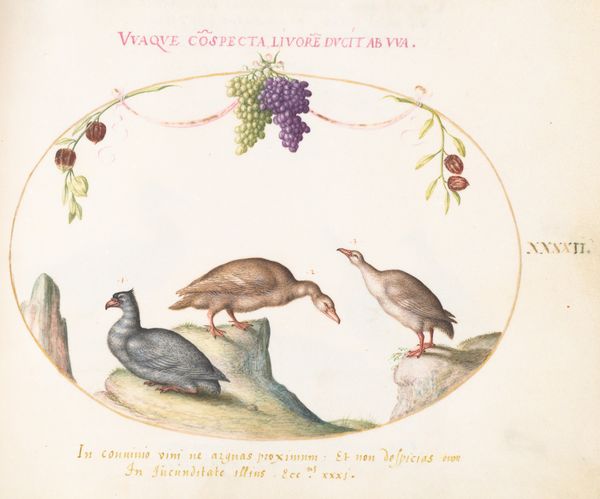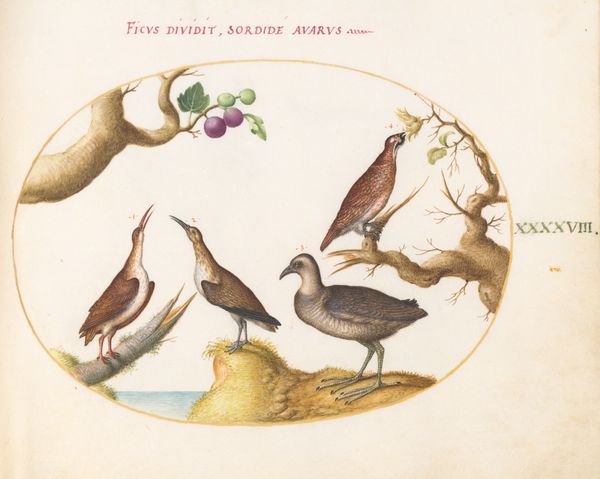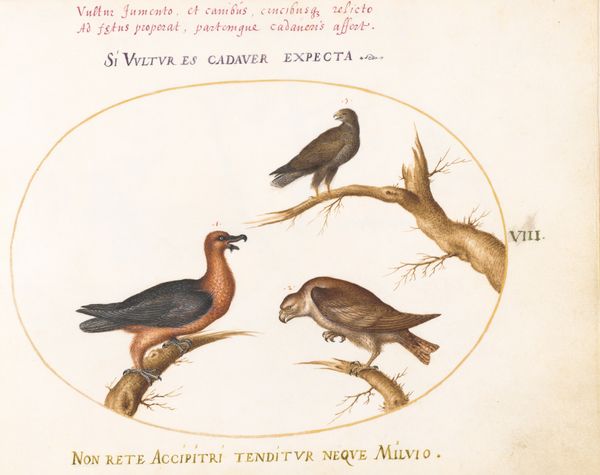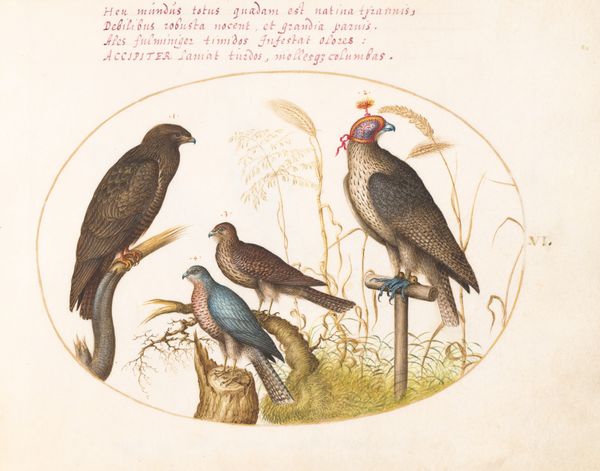
Plate 43: Sandpipers and Other Shore Birds Admiring a Garland of Flowers c. 1575 - 1580
0:00
0:00
drawing, print, watercolor
#
drawing
# print
#
mannerism
#
figuration
#
11_renaissance
#
watercolor
#
botanical art
Dimensions: page size (approximate): 14.3 x 18.4 cm (5 5/8 x 7 1/4 in.)
Copyright: National Gallery of Art: CC0 1.0
Curator: Joris Hoefnagel's "Plate 43: Sandpipers and Other Shore Birds Admiring a Garland of Flowers," dating back to about 1575 to 1580, presents an intriguing study in contrasts. Look closely at how he marries botanical and zoological observation in this detailed watercolor and print. Editor: My immediate impression is one of whimsical seriousness. The garland juxtaposed with the birds creates an unusual harmony. There's almost a heraldic quality to it. Curator: Note Hoefnagel’s precision in rendering each bird’s plumage and posture. His keen observation and delicate application of watercolor create lifelike representations within this constructed oval space. We have five different types of bird depicted, each painstakingly different in its stature and colouring. Editor: But this isn’t merely a detached study. The Latin text implies something about cultural prohibitions surrounding food. The garlic and beans above perhaps hold greater symbolic weight related to Egyptian eating customs and the idea of reverence and violation? Curator: Certainly. The garland itself—onions, beans, and other vegetables—acts as a still life above the birds. We might read the entire composition as a complex system of formal relationships – shapes echoing shapes, colors playing against each other – with meaning emerging from those relations. The placement of text anchors the reading too; it operates to tell the viewer how to decode the visual data above. Editor: And it speaks volumes about the role of natural history illustrations at the time. Consider the socio-political dimensions of such representations and the context in which the "new world" was being interpreted. Who did these illustrations serve and what implicit biases were at work? The role of these kinds of depictions must be scrutinized. Curator: Agreed. This single image contains elements of decoration, naturalism, humanism, and symbolism, making a compelling moment for reflection on our relation with nature and knowledge itself. Editor: A tiny tableau encapsulating a world of early modern beliefs about culture and the natural world. It reminds us that what appears as objective observation is always framed by human ideas and social practice.
Comments
No comments
Be the first to comment and join the conversation on the ultimate creative platform.
